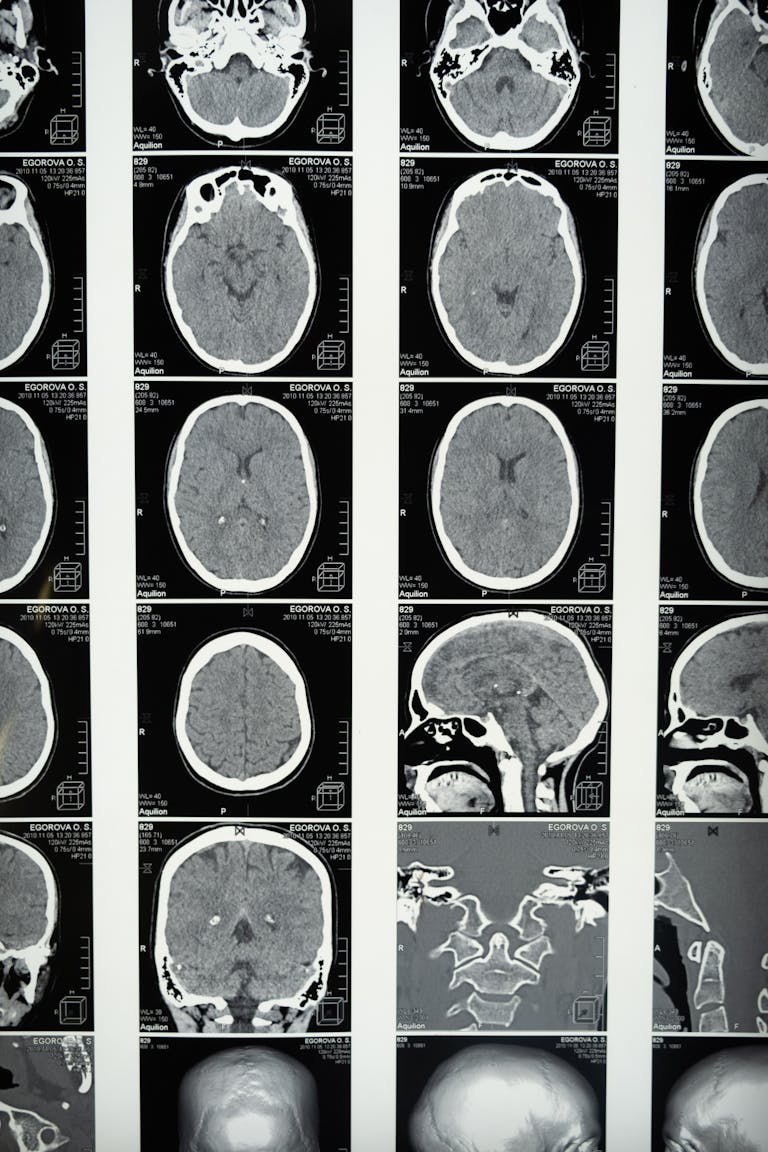
Lurking in pantries across America is a silent health threat that nutritionists, researchers, and public health officials are increasingly sounding the alarm about: ultra-processed foods. Recent studies have revealed shocking statistics about their prevalence in modern diets and their profound impact on health outcomes. This isn’t just about occasional indulgences—it’s about a fundamental shift in how Americans eat, and the consequences are becoming impossible to ignore.
The Ubiquity of Ultra-Processing

According to a landmark study published in BMJ Open, ultra-processed foods now constitute approximately 73% of the U.S. food supply and make up nearly 60% of calories consumed by the average American (Martínez Steele et al., 2016). This represents a dramatic transformation of the American diet over just a few decades.
But what exactly qualifies as “ultra-processed”? The widely-used NOVA classification system, developed by researchers at the University of São Paulo in Brazil, defines ultra-processed foods as “industrial formulations made entirely or mostly from substances extracted from foods (oils, fats, sugar, starch, and proteins), derived from food constituents (hydrogenated fats and modified starch), or synthesized in laboratories from food substrates or other organic sources (flavor enhancers, colors, and several food additives used to make the product hyper-palatable)” (Monteiro et al., 2019).
Common examples include:
- Carbonated soft drinks
- Packaged snacks and cookies
- Instant noodles and soups
- Reconstituted meat products like nuggets and fish sticks
- Ready-to-heat meals
- Breakfast cereals with added sugars
- Mass-produced packaged breads and buns
- Energy drinks and flavored milk products
Dr. Kevin Hall, a researcher at the National Institute of Diabetes and Digestive and Kidney Diseases, explains: “Ultra-processed foods are designed to be convenient, hyper-palatable, and relatively inexpensive. They’re engineered to appeal to our taste preferences and often trigger reward pathways in the brain similar to those activated by addictive substances” (Hall et al., 2019).
The Emerging Health Evidence

The health concerns surrounding ultra-processed foods have moved well beyond theoretical worries to hard scientific evidence. A series of high-quality studies have established links between high consumption of these foods and numerous adverse health outcomes:
Weight Gain and Obesity: In 2019, the NIH published results from the first randomized controlled trial investigating the effects of ultra-processed foods on weight gain. Participants on the ultra-processed diet consumed approximately 500 more calories per day and gained an average of two pounds over two weeks compared to when they ate unprocessed foods—despite meals being matched for calories, sugar, fat, fiber, and macronutrients (Hall et al., 2019).
Cardiovascular Disease: The NutriNet-Santé cohort study, which followed more than 105,000 French adults, found that a 10% increase in the proportion of ultra-processed foods in the diet was associated with a 12% increased risk of cardiovascular disease, a 13% increased risk of coronary heart disease, and an 11% increased risk of cerebrovascular disease (Srour et al., 2019).
Type 2 Diabetes: Research published in JAMA Internal Medicine following over 100,000 participants found that higher consumption of ultra-processed foods was associated with a 15% higher risk of developing type 2 diabetes, even after adjusting for body weight and other dietary and lifestyle factors (Srour et al., 2020).
Cancer Risk: A study of nearly 105,000 participants published in The BMJ found that a 10% increase in the proportion of ultra-processed foods in the diet was associated with a more than 10% increase in the risks of overall and breast cancer (Fiolet et al., 2018).
All-Cause Mortality: Perhaps most concerning, multiple large cohort studies have linked higher consumption of ultra-processed foods with increased risk of death from all causes. A study published in JAMA Internal Medicine that followed more than 44,000 French adults found that each 10% increase in ultra-processed food consumption was associated with a 14% higher risk of all-cause mortality (Schnabel et al., 2019).
“What’s particularly troubling is that these associations remain even after controlling for the nutritional quality of the diet,” explains Dr. Mathilde Touvier, Research Director at the French National Institute for Health and Medical Research (INSERM). “This suggests there may be effects from ultra-processed foods that go beyond their nutrient content” (Touvier et al., 2020).
Beyond Nutrition: The Multiple Mechanisms of Harm
The negative health effects of ultra-processed foods appear to extend beyond their typically poor nutritional profiles. Emerging research points to several other mechanisms that may explain their health impacts:
Food Additives: Many ultra-processed foods contain additives like emulsifiers, artificial sweeteners, and preservatives that have been linked to adverse health effects in laboratory studies. Research published in Nature found that common emulsifiers carboxymethylcellulose and polysorbate-80 altered gut microbiota composition and increased intestinal inflammation in mice (Chassaing et al., 2015).
Packaging Contaminants: Chemicals from food packaging, such as phthalates and bisphenols, can leach into ultra-processed foods. A review in Environmental Health Perspectives linked these compounds to endocrine disruption, metabolic disorders, and developmental issues (Muncke et al., 2020).
Altered Gut Microbiome: The combination of low fiber, high sugar, emulsifiers, and artificial ingredients in many ultra-processed foods appears to disrupt the gut microbiome. Research in Cell Host & Microbe demonstrated that ultra-processed diets rapidly alter gut microbial composition in ways associated with metabolic disease (Zinöcker & Lindseth, 2018).
Hyperpalatability and Overconsumption: Ultra-processed foods are designed to be exceptionally palatable, often triggering reward systems in the brain that can lead to overconsumption. A study in Cell Metabolism found that these foods activated similar neural reward pathways as those seen in substance addiction (Small & DiFeliceantonio, 2019).
Dr. Carlos Monteiro, one of the creators of the NOVA classification system, argues: “The issue with ultra-processed foods isn’t just about nutrients—it’s about what happens to the food matrix when it undergoes extensive industrial processing and manipulation. The whole becomes different from the sum of its parts” (Monteiro et al., 2018).
Children and Ultra-Processed Foods: The Next Generation at Risk

The prevalence of ultra-processed foods in children’s diets is particularly alarming. According to data from the National Health and Nutrition Examination Survey (NHANES), ultra-processed foods constitute nearly 67% of calories in the diets of children and adolescents in the United States (Wang et al., 2021).
A study published in JAMA found that American children with the highest intake of ultra-processed foods had a 45% higher risk of obesity compared to those with the lowest intake (Zhang et al., 2021). This association was independent of maternal education, household income, and other socioeconomic factors.
“The early years are critical for establishing food preferences and eating patterns,” explains Dr. Jennifer Harris, Senior Research Advisor at the Rudd Center for Food Policy and Obesity. “Heavy marketing of ultra-processed foods to children creates lifelong consumers and may contribute to health disparities, as these products are often aggressively marketed in low-income neighborhoods” (Harris et al., 2022).
Socioeconomic and Racial Disparities
The consumption of ultra-processed foods follows clear socioeconomic patterns. A study published in BMC Medicine found that households with lower incomes and less education consumed significantly more ultra-processed foods than those with higher socioeconomic status (Juul et al., 2018).
These disparities extend to racial and ethnic lines as well. Research from the American Journal of Clinical Nutrition found that non-Hispanic Black Americans consumed a higher percentage of calories from ultra-processed foods compared to non-Hispanic whites and Mexican Americans, even after adjusting for socioeconomic factors (Dunford et al., 2021).
Food insecurity and limited access to fresh foods in many communities create structural barriers to healthy eating,” explains Dr. Marisa Shames, a public health researcher at Johns Hopkins University. “When families are stretching food budgets, ultra-processed foods often provide more calories per dollar than less processed alternatives” (Shames et al., 2021).
Policy Responses and Industry Pushback

As evidence mounts, public health authorities worldwide have begun implementing policies to reduce ultra-processed food consumption:
- In 2019, Brazil released dietary guidelines explicitly recommending avoidance of ultra-processed foods.
- Chile implemented warning labels and marketing restrictions on unhealthy processed foods in 2016, with early evaluations showing a 24% decrease in purchases of sugar-sweetened beverages (Taillie et al., 2020).
- Mexico’s front-of-package warning label system, implemented in 2020, appears to be shifting purchasing patterns away from ultra-processed foods (Jáuregui et al., 2022).
- In the U.S., some cities like Berkeley and Philadelphia have implemented taxes on sugar-sweetened beverages, many of which are ultra-processed.
The food industry has responded with predictable opposition to both the concept of ultra-processed foods and related regulatory approaches. The International Food Information Council, an industry-funded group, has questioned the scientific basis of the NOVA classification system and argued that “demonizing” certain foods is counterproductive.
Marion Nestle, Professor Emerita of Nutrition and Food Studies at New York University, observes: “There’s a clear parallel to how the tobacco industry responded to evidence linking cigarettes to cancer. The food industry uses similar tactics: funding favorable research, emphasizing personal responsibility, and lobbying aggressively against regulation” (Nestle, 2021).
Making Personal Choices in an Ultra-Processed World
For individuals navigating this food environment, complete avoidance of ultra-processed foods may be unrealistic, but significant reductions are achievable:
- Focus on whole foods: Prioritize fresh fruits, vegetables, whole grains, legumes, nuts, and minimally processed animal products.
- Cook at home when possible: Home cooking gives control over ingredients and processing methods.
- Read ingredient lists, not just nutrition facts: Long ingredient lists with unfamiliar additives often signal ultra-processing.
- Gradual transitions: Small, sustainable changes toward less processed options are more effective than drastic dietary overhauls.
“It’s important to approach this issue with nuance and without shame,” advises Dr. Sarah Ball, a registered dietitian and researcher at the University of North Carolina. “Some ultra-processed foods serve important roles in food security and convenience. The goal should be reducing reliance on these foods, not eliminating every instance of them” (Ball et al., 2022).
The Future of Food Processing

The conversation around ultra-processed foods has spurred innovation in food technology. Companies are developing minimally processed convenience foods that maintain nutritional integrity while offering the convenience consumers demand.
The future may involve new processing technologies that preserve food structure and beneficial compounds while extending shelf life,” suggests Dr. David Ludwig, professor of nutrition at Harvard School of Public Health. “We need to distinguish between beneficial processing that makes nutritious foods more accessible and harmful processing that fundamentally alters food properties in ways that promote disease” (Ludwig, 2021).
Conclusion
The evidence regarding ultra-processed foods presents a clear challenge to public health in the 21st century. As these products have come to dominate the food landscape, they have brought with them a host of chronic health conditions that threaten to reverse decades of progress in public health.
The good news is that awareness is growing. From individual consumers making different choices at the grocery store to policymakers implementing structural changes, there is momentum toward addressing this hidden health crisis. The path forward will require collaborative efforts across sectors: improved regulations, more transparent food labeling, greater access to minimally processed foods, and continued research into the precise mechanisms by which ultra-processing affects health.
What seems increasingly clear is that the solution won’t be found in reformulation alone. As Dr. Anthony Fardet, a researcher at the French National Institute for Agricultural Research, puts it: “The future of healthy diets may depend less on nutrition science’s understanding of individual nutrients and more on reconnecting with the wisdom of traditional food cultures, where ultra-processing was simply not part of the equation” (Fardet & Rock, 2020).
References
Ball, S. M., Smith, J. D., Anderson Steeves, E., & Colby, S. E. (2022). Ultra-processed food consumption among low-income families: Factors influencing choices and opportunities for intervention. Current Developments in Nutrition, 6(1), nzac008.
Chassaing, B., Koren, O., Goodrich, J. K., Poole, A. C., Srinivasan, S., Ley, R. E., & Gewirtz, A. T. (2015). Dietary emulsifiers impact the mouse gut microbiota promoting colitis and metabolic syndrome. Nature, 519(7541), 92-96.
Dunford, E. K., Popkin, B. M., & Ng, S. W. (2021). Disparities in ultra-processed food consumption among US adults by race/ethnicity, education, and income in NHANES 2011-2018. The American Journal of Clinical Nutrition, 114(6), 2038-2046.
Fardet, A., & Rock, E. (2020). Ultra-processed foods and food system sustainability: What are the links? Sustainability, 12(15), 6280.
Fiolet, T., Srour, B., Sellem, L., Kesse-Guyot, E., Allès, B., Méjean, C., Deschasaux, M., Fassier, P., Latino-Martel, P., Beslay, M., Hercberg, S., Lavalette, C., Monteiro, C. A., Julia, C., & Touvier, M. (2018). Consumption of ultra-processed foods and cancer risk: Results from NutriNet-Santé prospective cohort. BMJ, 360, k322.
Hall, K. D., Ayuketah, A., Brychta, R., Cai, H., Cassimatis, T., Chen, K. Y., Chung, S. T., Costa, E., Courville, A., Darcey, V., Fletcher, L. A., Forde, C. G., Gharib, A. M., Guo, J., Howard, R., Joseph, P. V., McGehee, S., Ouwerkerk, R., Raisinger, K., … Zhou, M. (2019). Ultra-processed diets cause excess calorie intake and weight gain: An inpatient randomized controlled trial of ad libitum food intake. Cell Metabolism, 30(1), 67-77.e3.
Harris, J. L., Fleming-Milici, F., Kibwana-Jaff, M. A., & Phillips, M. L. (2022). Food marketing to children and adolescents: Persistent problems and possible solutions. Annual Review of Public Health, 43, 403-423.
Jáuregui, A., Vargas-Meza, J., Nieto, C., Contreras-Manzano, A., Alejandro, N. Z., Tolentino-Mayo, L., Hall, M. G., & Barquera, S. (2022). Impact of front-of-pack nutrition labels on consumer purchasing intentions: A randomized experiment in low-, middle-, and high-income Mexican adults. PLOS ONE, 17(2), e0263422.
Juul, F., Martinez-Steele, E., Parekh, N., Monteiro, C. A., & Chang, V. W. (2018). Ultra-processed food consumption and excess weight among US adults. British Journal of Nutrition, 120(1), 90-100.
Ludwig, D. S. (2021). The future of ultra-processed foods. JAMA, 326(5), 388-389.
Martínez Steele, E., Baraldi, L. G., Louzada, M. L., Moubarac, J. C., Mozaffarian, D., & Monteiro, C. A. (2016). Ultra-processed foods and added sugars in the US diet: Evidence from a nationally representative cross-sectional study. BMJ Open, 6(3), e009892.
Monteiro, C. A., Cannon, G., Levy, R. B., Moubarac, J. C., Louzada, M. L., Rauber, F., Khandpur, N., Cediel, G., Neri, D., Martinez-Steele, E., Baraldi, L. G., & Jaime, P. C. (2019). Ultra-processed foods: What they are and how to identify them. Public Health Nutrition, 22(5), 936-941.
Monteiro, C. A., Cannon, G., Moubarac, J. C., Levy, R. B., Louzada, M. L. C., & Jaime, P. C. (2018). The UN Decade of Nutrition, the NOVA food classification and the trouble with ultra-processing. Public Health Nutrition, 21(1), 5-17.
Muncke, J., Andersson, A. M., Backhaus, T., Boucher, J. M., Carney Almroth, B., Castillo Castillo, A., Chevrier, J., Demeneix, B. A., Emmanuel, J. A., Fini, J. B., Gee, D., Geueke, B., Groh, K., Heindel, J. J., Houlihan, J., Kassotis, C. D., Kwiatkowski, C. F., Lefferts, L. Y., Maffini, M. V., … Scheringer, M. (2020). Impacts of food contact chemicals on human health: A consensus statement. Environmental Health, 19(1), 25.
Nestle, M. (2021). Ultra-processed foods and health: It’s about the whole food system. The American Journal of Clinical Nutrition, 113(1), 4-5.
Schnabel, L., Kesse-Guyot, E., Allès, B., Touvier, M., Srour, B., Hercberg, S., Buscail, C., & Julia, C. (2019). Association between ultraprocessed food consumption and risk of mortality among middle-aged adults in France. JAMA Internal Medicine, 179(4), 490-498.
Shames, M., Gillespie, C., & Yang, J. (2021). The associations between ultra-processed food intake and neighborhood food environment among low-income populations in urban settings. Journal of Community Health, 46(5), 1036-1045.
Small, D. M., & DiFeliceantonio, A. G. (2019). Processed foods and food reward. Science, 363(6425), 346-347.
Srour, B., Fezeu, L. K., Kesse-Guyot, E., Allès, B., Debras, C., Druesne-Pecollo, N., Chazelas, E., Deschasaux, M., Hercberg, S., Galan, P., Monteiro, C. A., Julia, C., & Touvier, M. (2020). Ultraprocessed food consumption and risk of type 2 diabetes among participants of the NutriNet-Santé prospective cohort. JAMA Internal Medicine, 180(2), 283-291.
Srour, B., Fezeu, L. K., Kesse-Guyot, E., Allès, B., Méjean, C., Andrianasolo, R. M., Chazelas, E., Deschasaux, M., Hercberg, S., Galan, P., Monteiro, C. A., Julia, C., & Touvier, M. (2019). Ultra-processed food intake and risk of cardiovascular disease: Prospective cohort study (NutriNet-Santé). BMJ, 365, l1451.
Taillie, L. S., Bercholz, M., Popkin, B., Reyes, M., Colchero, M. A., & Corvalán, C. (2020). Changes in food purchases after the Chilean policies on food labelling, marketing, and sales in schools: A before and after study. The Lancet Planetary Health, 4(9), e422-e433.
Touvier, M., Srour, B., Hercberg, S., & Julia, C. (2020). Reply to “Consumption of ultra-processed foods and health outcomes.” Nutrition, Metabolism and Cardiovascular Diseases, 30(11), 1993-1994.
Wang, L., Martínez Steele, E., Du, M., Pomeranz, J. L., O’Connor, L. E., Herrick, K. A., Luo, H., Zhang, X., Mozaffarian, D., & Zhang, F. F. (2021). Trends in consumption of ultraprocessed foods among US youths aged 2-19 years, 1999-2018. JAMA, 326(6), 519-530.
Zhang, Z., Jackson, S. L., Martinez, E., Gillespie, C., & Yang, Q. (2021). Association between ultraprocessed food intake and cardiovascular health in US adults: A cross-sectional analysis of the NHANES 2011-2018. American Journal of Clinical Nutrition, 113(2), 428-436.
Zinöcker, M. K., & Lindseth, I. A. (2018). The Western diet-microbiome-host interaction and its role in metabolic disease. Nutrients, 10(3), 365.






